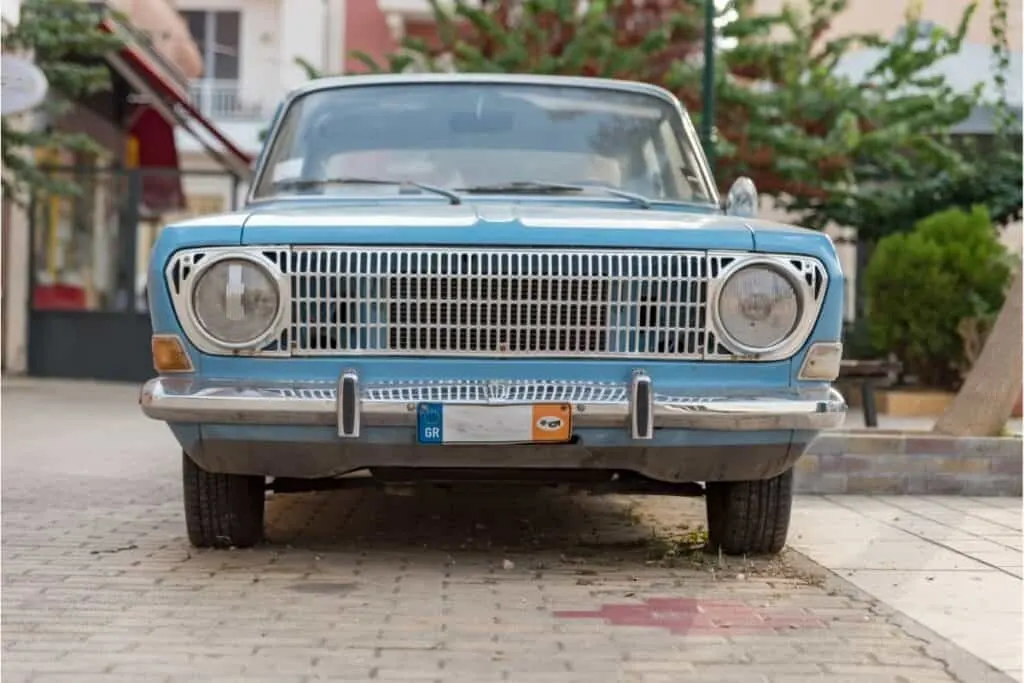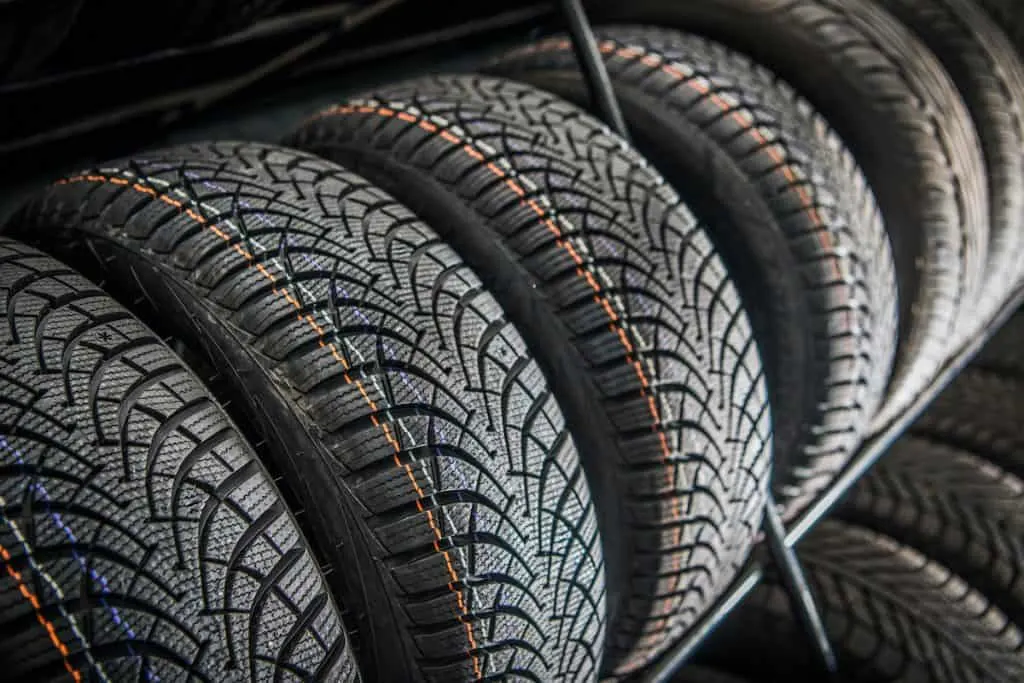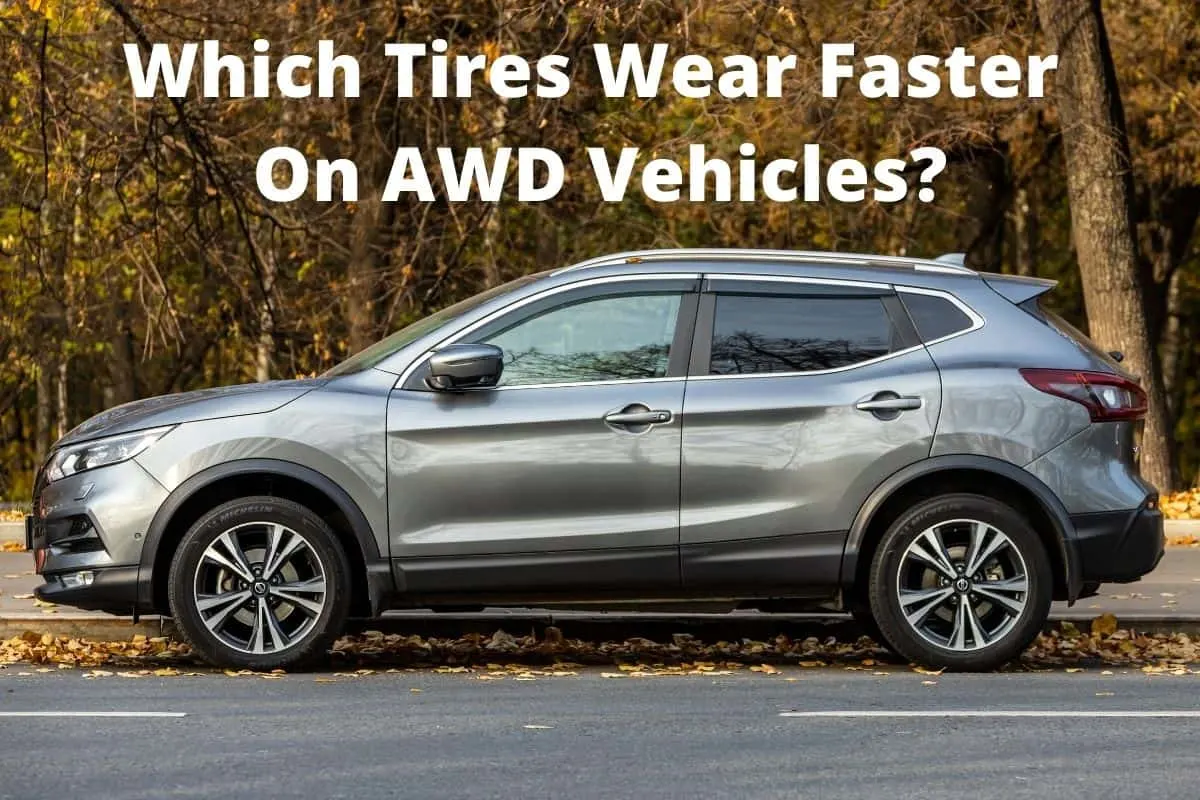AWD drive vehicles supply power to each of your vehicle’s wheels independently. As such, some of the vehicle’s tires can wear out faster than others.
The front tires on an all-wheel-drive vehicle tend to wear out faster because the transmission delivers more torque to the front axle. Additionally, the front end of most cars is heavier due to the engine placement, which leads to additional wear and tear for the front tires.
Keep reading to learn more about the tire wear patterns on AWD vehicles!
Why Do the Front Tires Wear Faster on an AWD?
There are a couple of reasons your front tires tend to wear faster on an AWD. The design of most AWD’s puts more force on them, and that breaks them down quicker.
If you’re driving an automatic AWD, its transmission tends to deliver more torque to the front. So, these experience the most wear and tear!
Also, the front of a vehicle tends to be heavier than the rear. As a result, front tires get pushed into the road a little harder. The more weight on a tire, the quicker it’ll break down.
Another thing to keep in mind would be your vehicle’s cornering. Nearly all vehicles use the front wheels to turn. Whenever you’re turning, your tires experience more force as a result. That tends to wear them out a little faster as well.
Also, your front tires have better traction most of the time. They’ll rarely spin out, unlike the back tires. Even accelerating quickly doesn’t make them lose traction all that much. Since they’re also delivering power to the road, they’re going to wear out faster.
Even breaking tends to deliver more force to the front of your vehicle. Since that’s where most of its weight is, your front tires have to work harder while slowing down.
Rotating your tires on an AWD vehicle is even more important than usual. Since the front tires wear quicker, you don’t want to leave them there for too long. Otherwise, you’ll need to replace them before the rear tires.

Which Tires Wear Faster the Left or the Right?
There isn’t as much of a difference when you’re looking at the left and right tires. However, you might find the tires on the left wear down a little quicker.
Overall, the front left tires seem to wear the quickest.
That’s because most drivers execute more right turns than anything else. And, a right turn delivers more force to the left tires than to the right.
Another reason would be the road’s camber. Camber refers to the slight tilt you’ll find on most roads.
Usually, that helps divert water away from the driving lanes. However, it also makes your left tires wear a little quicker, too.
To combat this wear, try swapping your tires from left to right. That should help them wear a little more evenly. By doing that, you’ll keep them in good shape for as long as possible.
Will Different Tires Affect AWD?
Mixing tires on an AWD could damage your drivetrain. Even the same brand tire won’t be the exact same dimensions if you’re only replacing one of them.
Since AWDs deliver power to each of them independently, you’ve got to have matching tires. Otherwise, you’ll confuse your vehicle’s computer system.
An AWD’s computer system determines how much power to deliver to each wheel. Then, it could harm your vehicle’s mechanics.
It might think you’re losing traction in one of the tires more often. As a result, it’ll deliver more power to that one. Delivering more power to one of them would end up reducing its lifespan. If you’d like them to last as long as possible, make sure you’ve got matching tires.
Even a small difference in treads could be a bigger deal than you’d think. Let’s use an example. You’ve got one tire with 8/32 in treads and another with 11/32 in. Although that doesn’t sound like much, it’ll make a huge difference.
After driving for a mile, the tire with the thinner treads would’ve traveled an additional 11 feet. That might not sound like much, but it will wear out that tire faster.
Frequently rotate your tires to prevent this from happening. Driving around on mismatched tires could harm your AWD’s drivetrain. A broken drivetrain could actually total your vehicle. So, using a set of matched tires is crucial.
It could even cause damage to your AWD’s differentials. Differentials are what deliver power to each wheel, independently. If your differential breaks, you’re in for a rough ride.

Do All 4 Tires Need to Be Replaced on an AWD?
Replacing all 4 tires at the same time is crucial whenever you’ve got an AWD. Otherwise, your tires won’t match, causing mechanical issues. Matching tires have the same characteristics and dimensions. Only using matching tires helps preserve your AWD’s drivetrain.
Even replacing one of them with the same brand would cause a problem. If there’s more than 3/32 in of difference in your tires’ treads, it’ll cause an issue. The bigger the difference, the more problems you’ll have.
Tires with smaller treads have to spin further to travel the same distance. Not only will that wear them out faster, but it’ll also mess up your AWD’s computer.
Rotating your tires frequently should minimize any issues. But, you’ve got to replace them at the same time. Once you’re ready for replacements, order new ones for all 4 wheels. That’s the best way to preserve your AWD’s drivetrain and differentials.
Understanding the Importance of Your Tires on an AWD
AWDs work a little differently than a typical 4WD vehicle. In a 4WD, your drivetrain delivers the same amount of power to each wheel. As a result, differences between your tires won’t be that much of a problem.
An AWD delivers power to each of the wheels, but it does so independently. There’s an onboard computer that calculates how much power should go to each of them. This only works whenever they’re all matching.
Usually, the front tires wear out faster than the ones on the rear. Rotating them often should prevent any significant differences. Still, when you’re replacing them, you’ve got to replace them all at the same time.
Riding on mismatched wheels will cause problems to your AWD’s drivetrain. That’s because the drivetrain won’t know how much power to deliver to each of them. So, don’t use mismatched wheels on your AWD if you’d like it to last.
